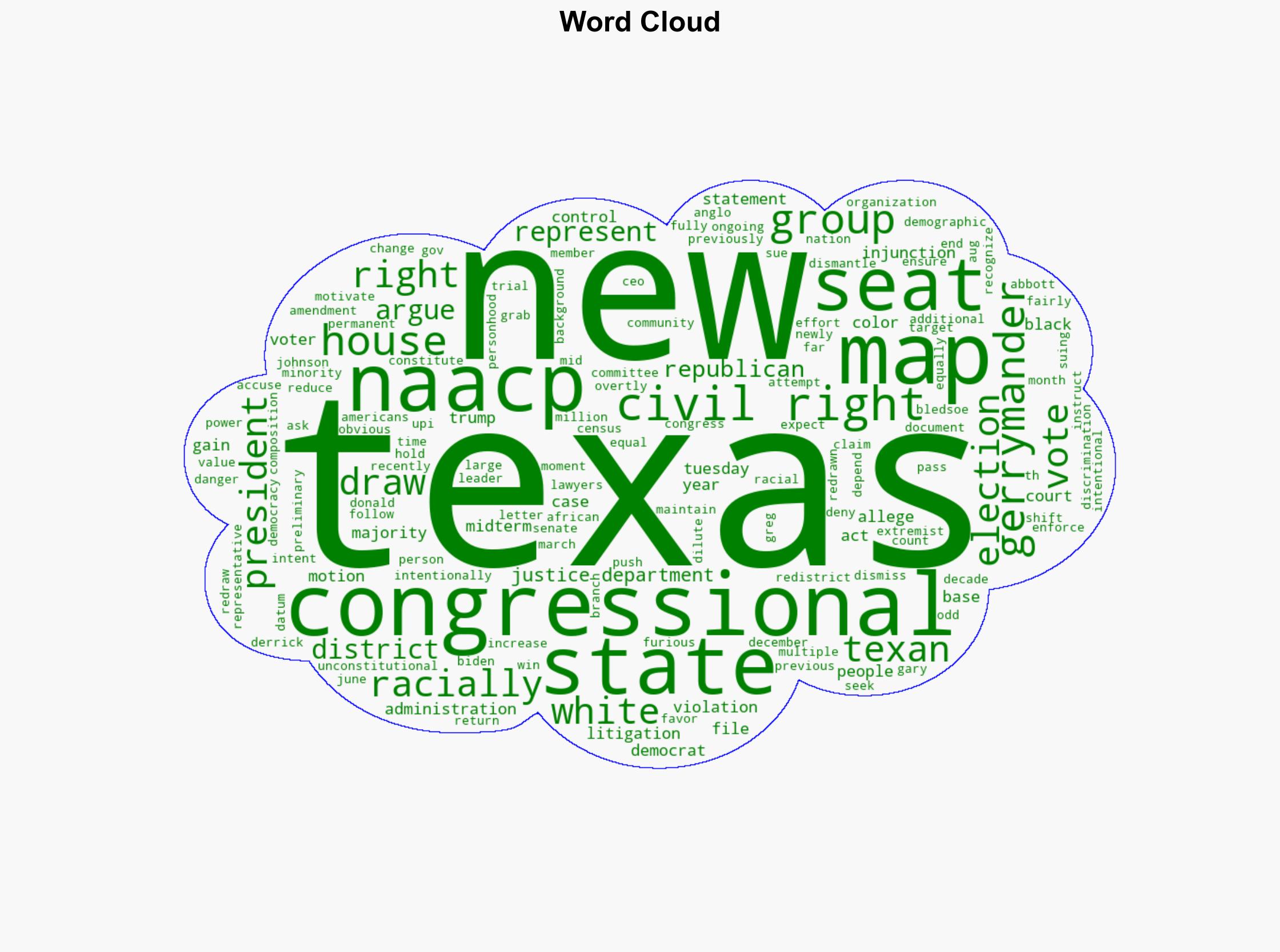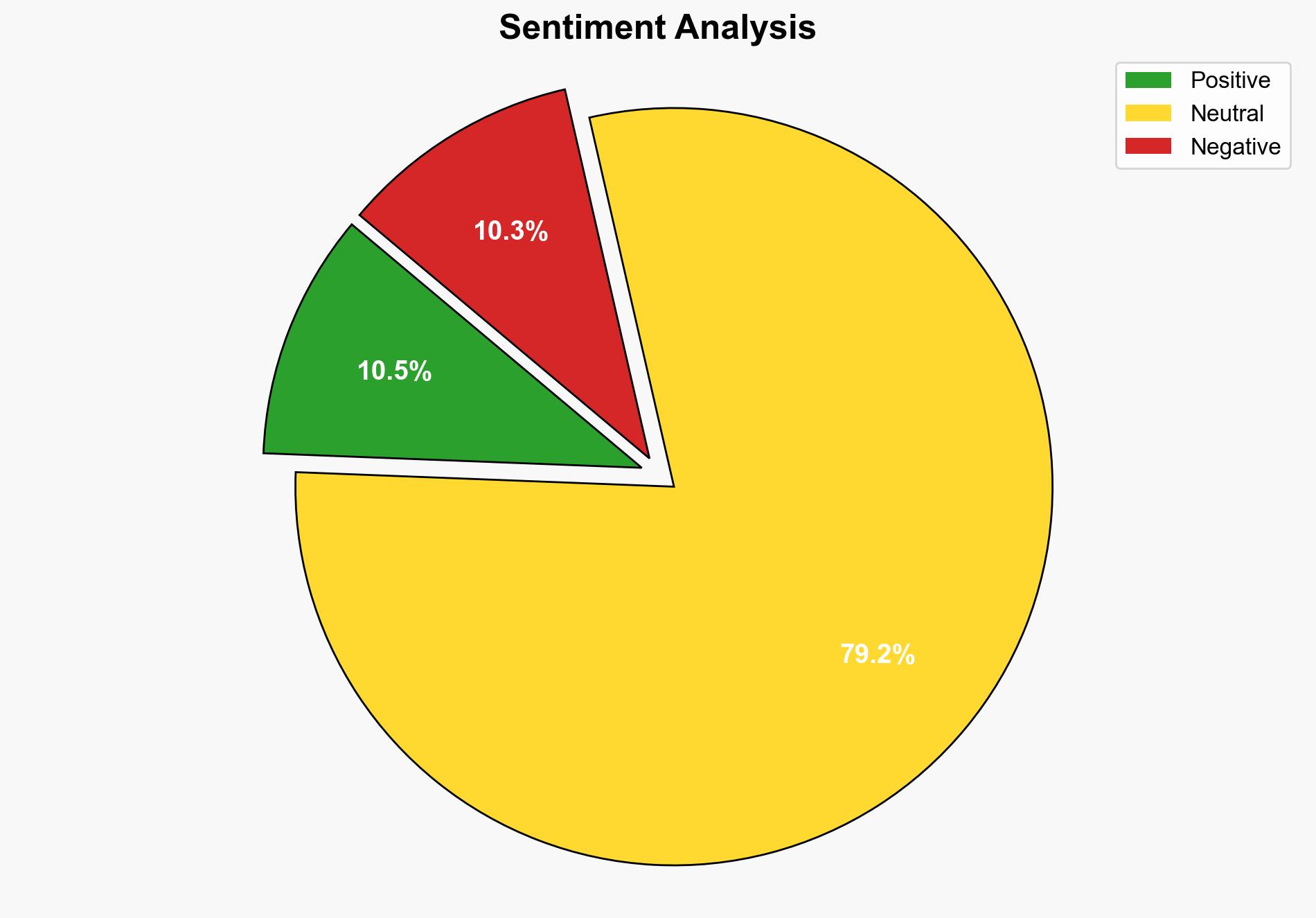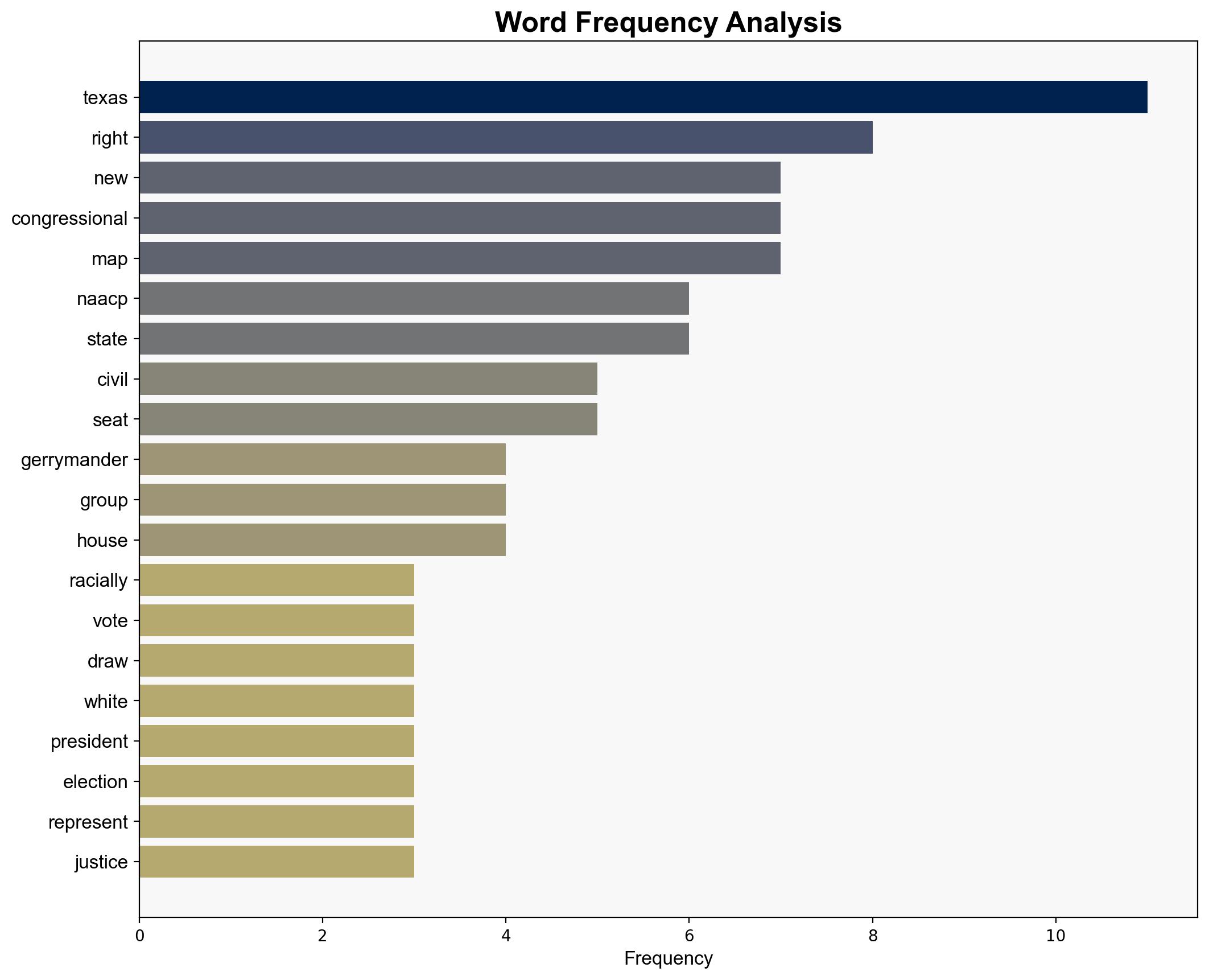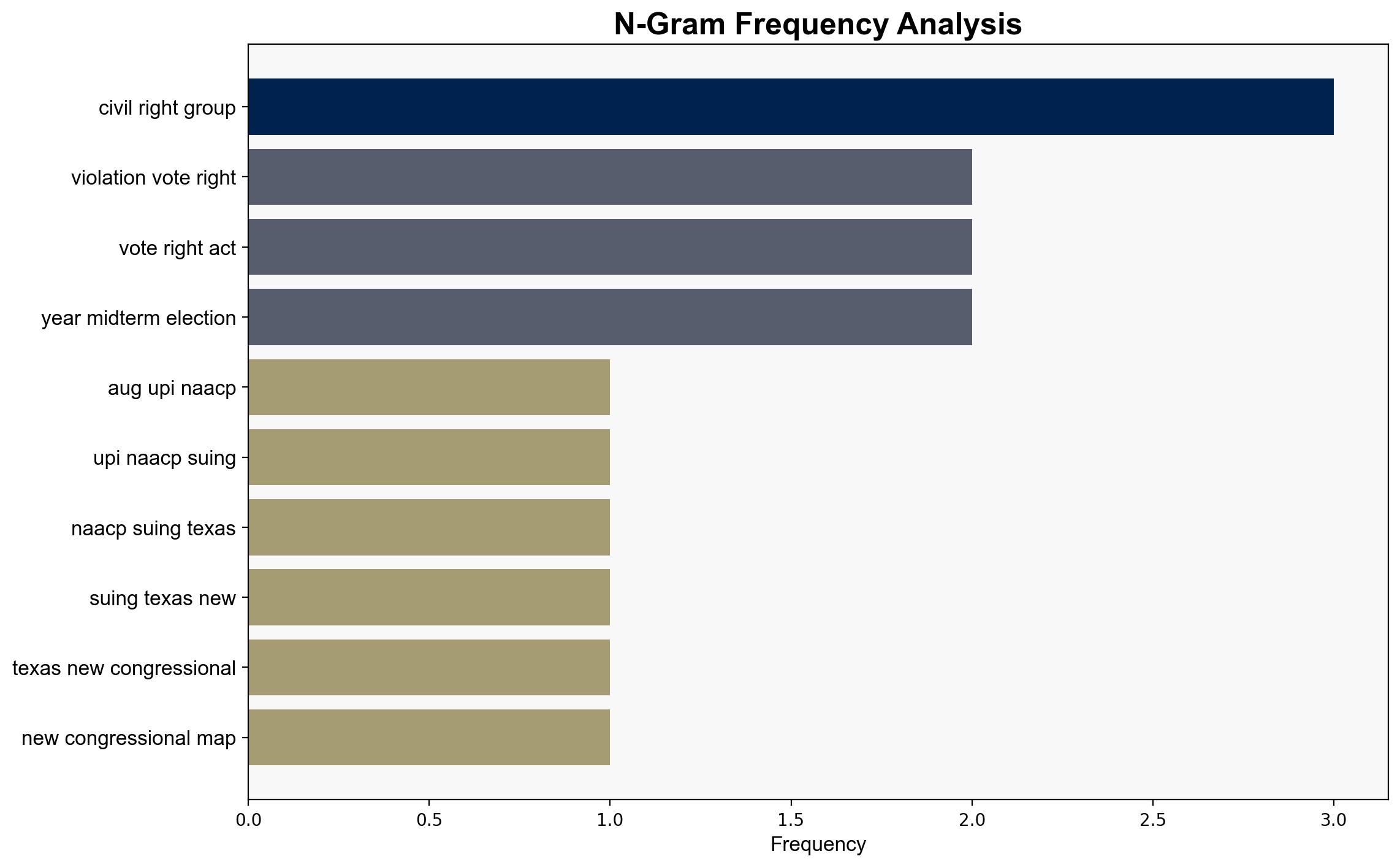NAACP sues Texas over new maps calling them racially gerrymandered – UPI.com
Published on: 2025-08-27
Intelligence Report: NAACP sues Texas over new maps calling them racially gerrymandered – UPI.com
1. BLUF (Bottom Line Up Front)
The NAACP’s lawsuit against Texas over alleged racially gerrymandered congressional maps presents a significant legal challenge with potential implications for voting rights and political representation. The most supported hypothesis suggests that the maps were drawn to dilute minority voting power, aligning with historical patterns of gerrymandering in Texas. Confidence level: Moderate. Recommended action: Monitor legal proceedings and prepare for potential federal intervention or legislative changes.
2. Competing Hypotheses
1. **Hypothesis A**: The new congressional maps were intentionally drawn to dilute the voting power of minority communities, particularly Black and Hispanic voters, to maintain Republican control.
– **Supporting Evidence**: Historical precedence of gerrymandering in Texas, statements from NAACP and civil rights groups, demographic shifts not reflected in new maps.
2. **Hypothesis B**: The maps were drawn based on political strategy rather than racial motivations, aiming to consolidate Republican power without explicit racial bias.
– **Supporting Evidence**: Political motivations often drive redistricting, potential lack of direct evidence of racial intent, legal defense may argue compliance with Voting Rights Act.
Using ACH 2.0, Hypothesis A is better supported due to the alignment of demographic changes with the alleged gerrymandering patterns and historical context.
3. Key Assumptions and Red Flags
– **Assumptions**: Hypothesis A assumes intentional racial bias in map drawing; Hypothesis B assumes political strategy without racial intent.
– **Red Flags**: Lack of transparency in the map-drawing process, potential bias in legal interpretations, and historical precedence of similar allegations.
– **Blind Spots**: Potential underestimation of political motivations intertwined with racial considerations.
4. Implications and Strategic Risks
– **Legal Implications**: A court ruling against Texas could mandate redrawing of maps, impacting future elections.
– **Political Risks**: Heightened tensions between state and federal governments, potential for increased voter disenfranchisement.
– **Geopolitical Dimensions**: Federal oversight might be perceived as overreach, affecting state-federal relations.
– **Psychological Impact**: Erosion of trust in electoral processes among minority communities.
5. Recommendations and Outlook
- Monitor court proceedings closely to anticipate potential outcomes and prepare for legislative responses.
- Engage with civil rights organizations to understand grassroots perspectives and potential mobilization efforts.
- Scenario Projections:
- Best Case: Maps are redrawn to reflect demographic realities, enhancing fair representation.
- Worst Case: Maps remain unchanged, leading to prolonged legal battles and voter disenfranchisement.
- Most Likely: Partial redrawing of maps with continued legal challenges and political negotiations.
6. Key Individuals and Entities
– Derrick Johnson
– Greg Abbott
– NAACP
– Justice Department
7. Thematic Tags
national security threats, voting rights, civil rights, political strategy, electoral integrity




